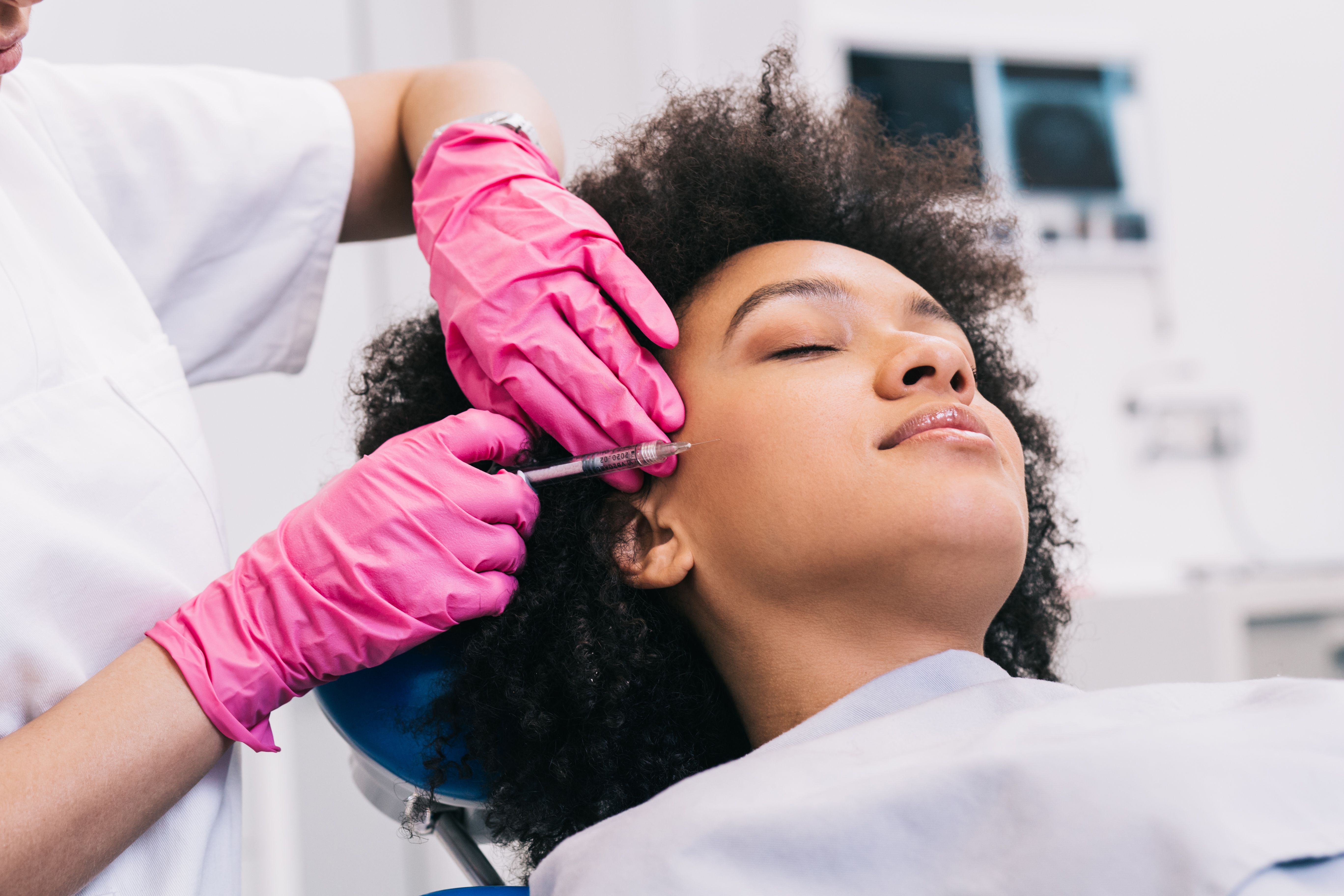- Case-Based Roundtable
- General Dermatology
- Eczema
- Chronic Hand Eczema
- Alopecia
- Aesthetics
- Vitiligo
- COVID-19
- Actinic Keratosis
- Precision Medicine and Biologics
- Rare Disease
- Wound Care
- Rosacea
- Psoriasis
- Psoriatic Arthritis
- Atopic Dermatitis
- Melasma
- NP and PA
- Skin Cancer
- Hidradenitis Suppurativa
- Drug Watch
- Pigmentary Disorders
- Acne
- Pediatric Dermatology
- Practice Management
- Prurigo Nodularis
- Buy-and-Bill
Article
Case Studies of Common Dyschromic AEs From Dermal Fillers in SOC Patients
Author(s):
Cheryl Burgess, MD, FAAD, reviewed the symptoms and diagnoses of collected case studies of dermal filler AEs at SCALE 2023.
hedgehog94/AdobeStock

To fully address the cosmetic concerns of patients with skin of color, it is crucial for dermatology providers to understand that skin of color cosmetic enhancements may differ from westernized beauty standards, according to Cheryl Burgess, MD, FAAD, the founder and president of the Center for Dermatology and Dermatologic Surgery and an assistant clinical professor of dermatology at Georgetown University Medical Center and George Washington University Hospital. In her SCALE 2023 session, “Common Dyschromic Adverse Events Associated With Dermal Fillers in Skin of Color,” Burgess also stressed that the facial anatomy, cultural preferences, ideals of beauty, and characteristic of aging vary widely among patients with skin of color, and that these varying cosmetic ideals are primary considerations in the selection and administration of cosmetic procedures for patients with skin of color.1
Burgess explained that as patients with skin of color age into their 40s and 50s, some patients begin to seek cosmetic treatments for volume and skin laxity. Black women typically do not experience perioral rhytids or periocular static rhytids as often as White women, and loss of volume is one of the main cosmetic concerns of Black women. Women of color who do seek out cosmetic procedures are more concerned about the risk of developing hyperpigmentation or scarring due to a procedure.
To give the audience a better understanding of common dyschromic adverse events associated with dermal fillers in patients with skin of color, Burgess reviewed multiple case studies, including symptoms, patient history, and diagnoses.
Case #1
Patient history: A 50-year-old woman presenting with infraorbital hallows who has tried various eye creams prescribed by aestheticians and physicians. The patient has hypertension, no reported allergies, is taking 30mg of nifedipine a day and OTC supplements vitamin D and E, and is an active tennis player. The patient’s family history includes hypertension, hypercholesterolemia, and heart disease.
Burgess presented case photos, showing the patient received 1-cc of hyaluronic acid (HA) soft tissue augmentation in the infraorbital hallows, and the patient was happy with the correction of the infraorbital hallows. Following the procedure, the patient developed hyperpigmentation at all sites of the HA injections of 2-month durations and was unresponsive to bleaching agents but did not experience any post-injection bruising.
The diagnosis was a hypersensitivity reaction to HA fillers, according to Burgess. Hypersensitivity is characterized by chronic reddish-brown discoloration at the sites of HA injection and is unresponsive to lightening or hydroquinone agents and Nd:YAG 1064 lasers. Hypersensitivity to HA is an uncommon reaction in all skin types but is occasionally seen in patients with skin of color in the infraorbital and nasolabial fold areas.
The patient was treated with 50 units of hyaluronidase to dissolve the HA and subsequent resolution of hyperpigmentation.
Case #2
Patient history: A 35-year-old woman presenting with infraorbital hallows who has also tried various eye creams prescribed by aestheticians and physicians. No reported past medical history, allergies, or family history. The patient takes OTC vitamins D and E and is an elementary school teacher.
In the presented case photos, the patient developed bruising in infraorbital hallows following HA fillers. A yellow hue subsequently followed by persistent gray/brown discoloration for months. The patient was unresponsive to hydroquinone compounds.
Burgess revealed the diagnosis as hemosiderin deposition in the skin. Burgess noted that through a process of elimination, the patient denied bruising or reaction in the left tear trough. A trial of Q-switched Nd:YAG 1064nm laser treatment was used to reduce the gray/brown pigment after 3 treatments. Burgess also mentioned that if the patient has been unresponsive to the Q-switchedNd:YAG laser treatment, hyaluronidase would have been necessary to dissolve the HA filler due to a possible hypersensitivity reaction.
Reference
- Burgess C. Common dyschromic adverse events associated with dermal fillers in skin of color. Presented at the 18th Annual Music City Symposium for Cosmetic Advances & Laser Education; May 17-21, 2023; Nashville, TN.






